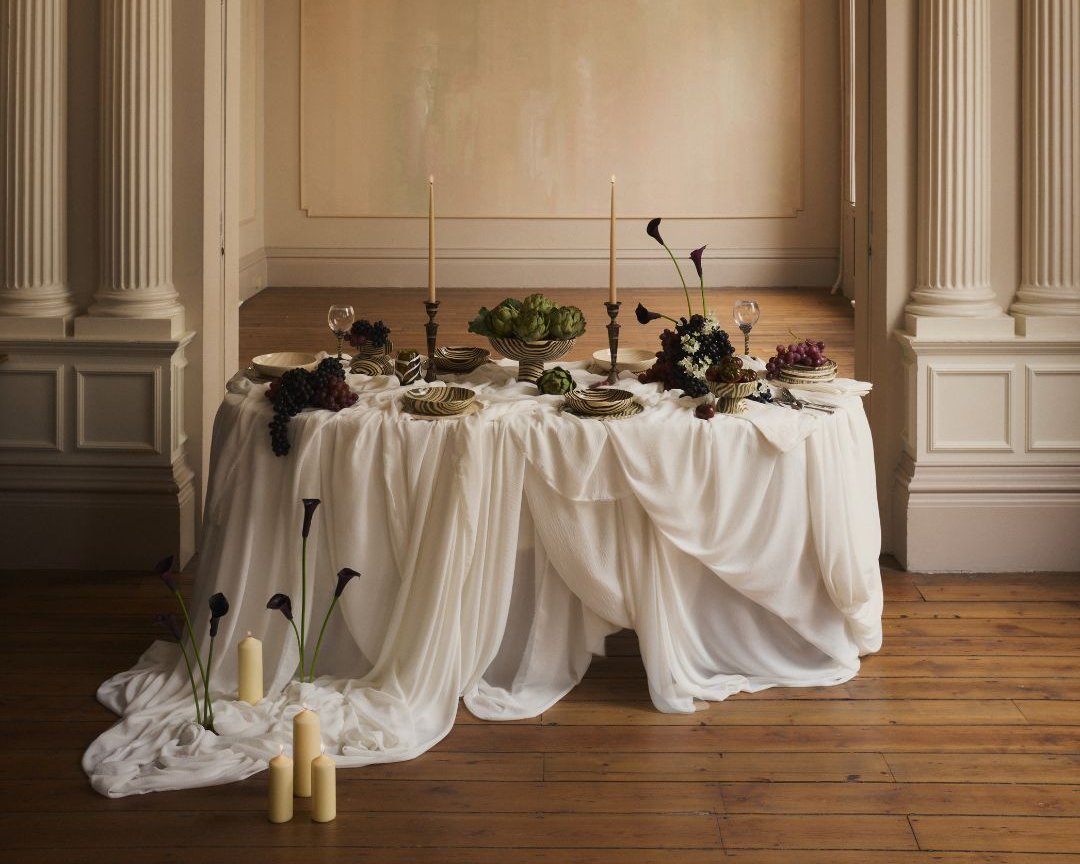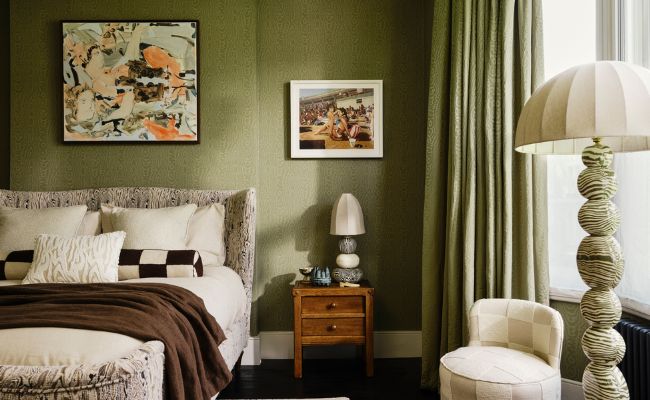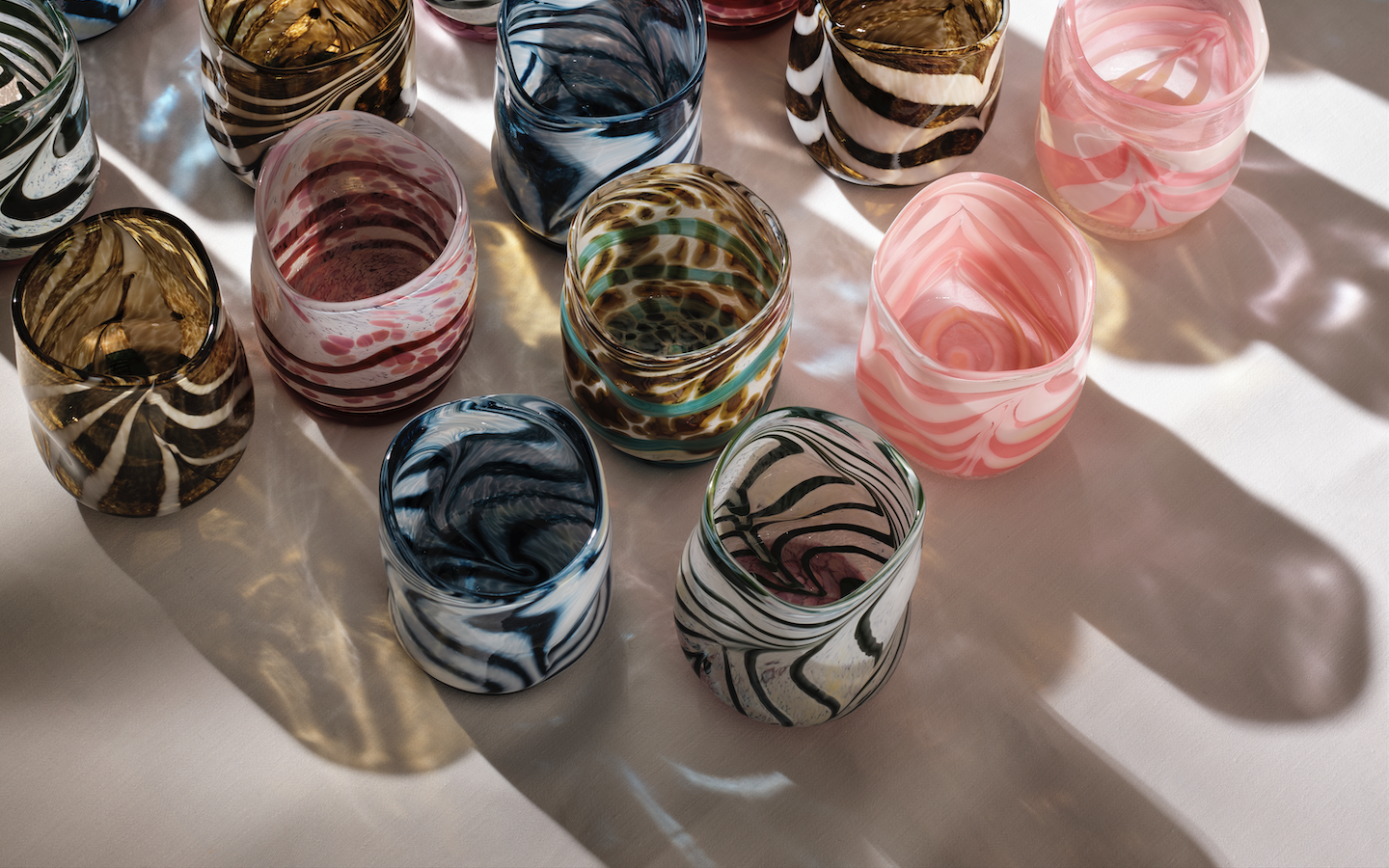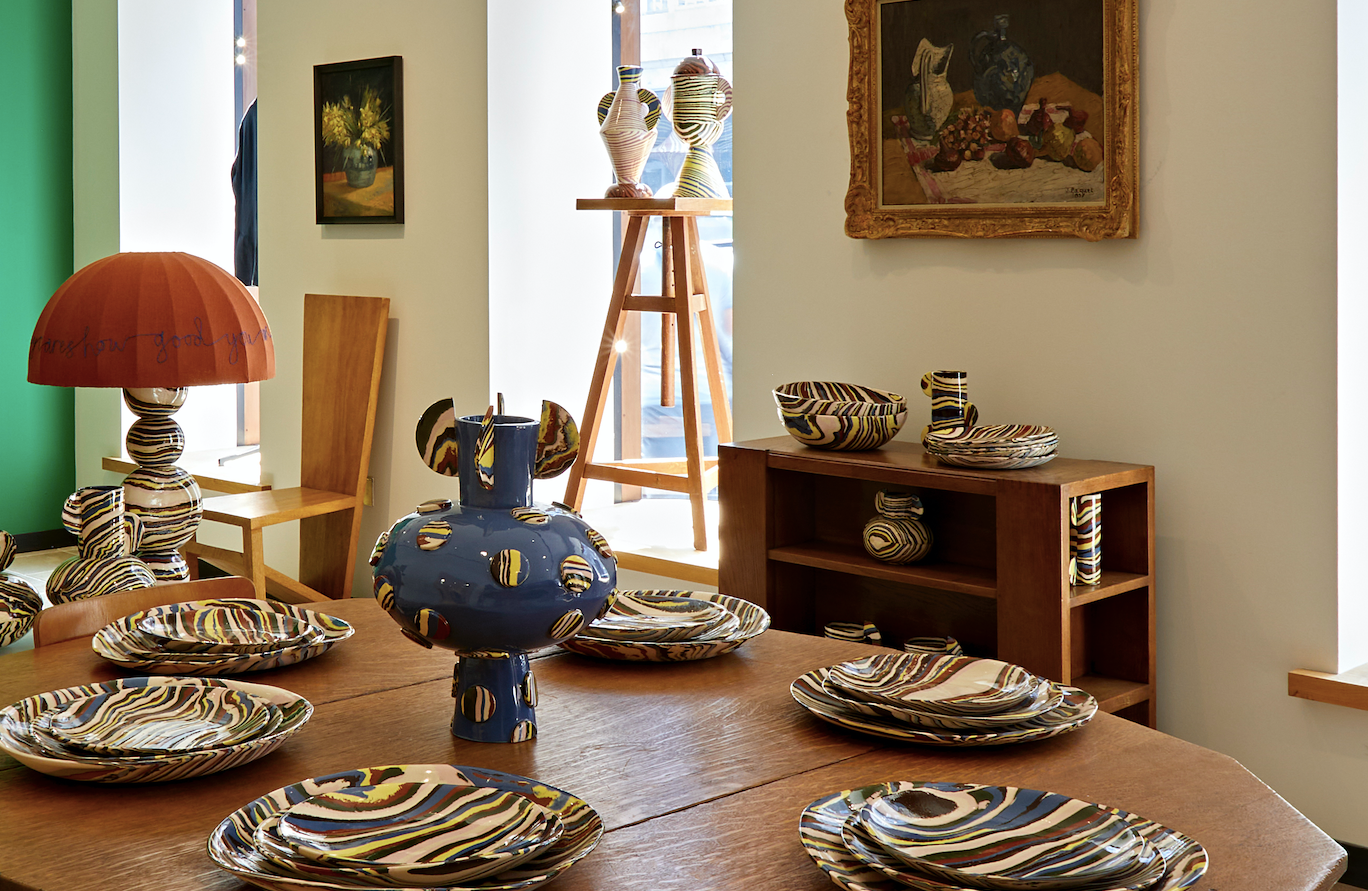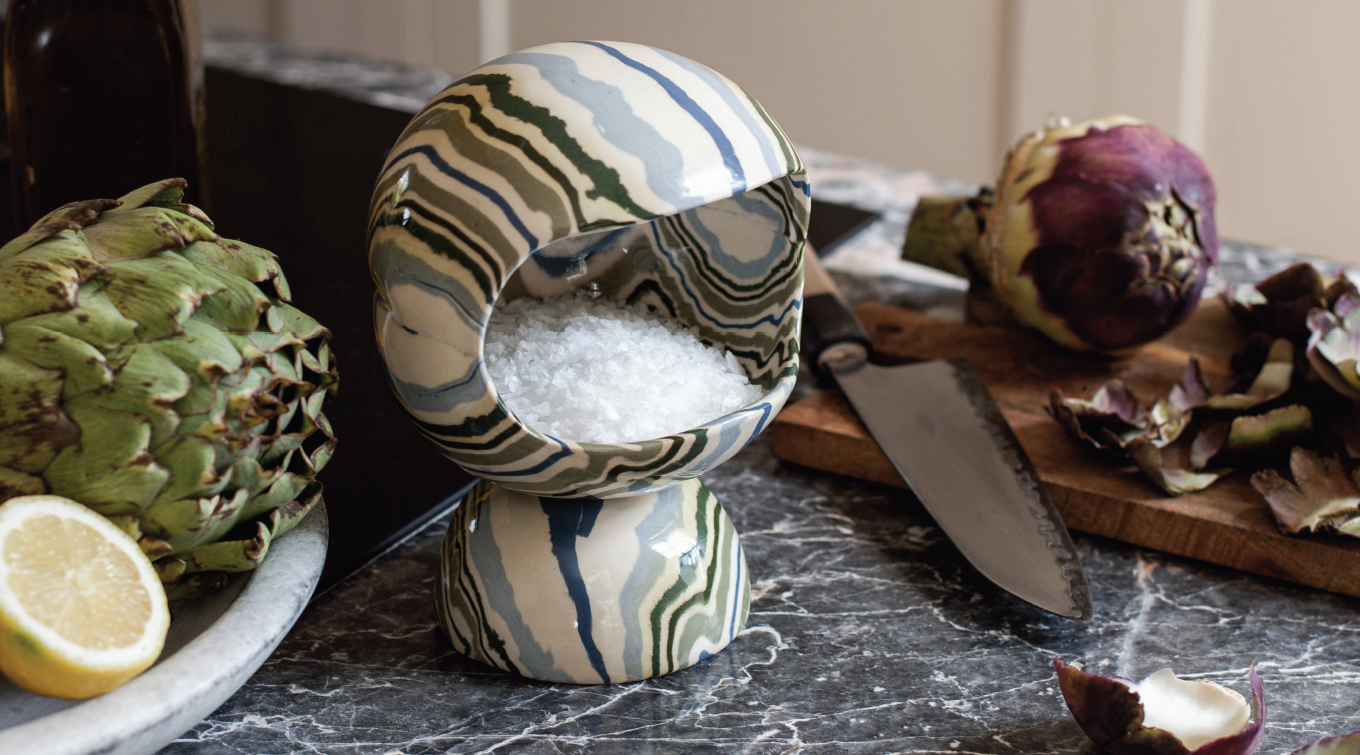
Henry Holland Studio x Cornish Sea Salt
Our new limited-edition ceramic collection designed in partnership with Cornish Sea Salt has landed. Taking inspiration from the powerful Cornish coastline, the new duo has been responsibly created from recycled clays in new sea foam blue & green colourways. Explore the collection here or read on for more...

"One thing that we've been working on the studio is developing new colours and also looking at how we can reuse and recycle our waste clay. When we needed to create multiple shades for this project to reflect the Cornish coast, it was the perfect vehicle for us to use this technique. Making sure we design and operate in the most responsible way possible is key for both of our brands, so its an exciting next step for us.’ - Henry
 The Recycled Clay Process: A Step by Step Guide
The Recycled Clay Process: A Step by Step Guide
Wondering how it's made? Henry has a bit of Blue Peter moment here and takes you through how we hand make products from recycled clays.
Step #1: We collect together all of our waste clays and separate the different colourways (blue & white / green & white etc) into different buckets, and leave those to dry out fully. The next morning we cover these completely with water and leave again overnight. This rehydrates the clay and when mixed creates a "smooshy" (ceramic technical term, obviously) recycled clay mixture.

Step #2: We then spread the smooth recycled clay mix out on a plaster board - in meringue style peaks - and allow to dry out overnight. The plaster absorbs a lot of moisture which helps quicken the drying process.

Step #3: The next morning the different coloured clay mixtures will have dried out enough so that you can form it into blocks that you can start to work with. The colours of the recycled clays will be softer shades of the original as the white and coloured clays will have mixed together.

Step #4: Now it's time to wedge the clay (a.k.a roll and bash it about a bit) to release all of the air-bubbles so that we can use it to build our final designs.

Step #5: To create the marbled effect, I used my own version of the nerikomi ceramic technique where I'll layer different coloured clay slabs on top of each other. These are then are wedged together to form the final patterned clay. Then it's onto the rolling, shaping, glazing and kilning, until - hey presto - Pinch & Pig are pride of place on the kitchen counter.

It's a simple as that! The Henry Holland Studio x Cornish Sea Salt Collection is available now. Check out www.cornishseasalt.co.uk.





